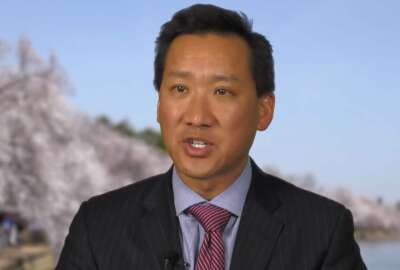
The 46-year federal learning curve
Guest columnist Tom Trabucco reflects on his 46-year federal career and the cast of characters he met along the way, as well as how he views the current set of...
 Mike Causey is on vacation this week and asked several readers, friends and even critics to write guest columns in his absence. Please enjoy today’s offering from retired long-time fed Tom Trabucco:
Mike Causey is on vacation this week and asked several readers, friends and even critics to write guest columns in his absence. Please enjoy today’s offering from retired long-time fed Tom Trabucco:
Since fully retiring in 2016, I’ve had the gift of time to reflect upon a long and varied career of service working with great colleagues, three separate federal entities, and two organizations representing federal employees and retirees. While I enjoy looking back and reminiscing about people, including some real characters, and events that taught, challenged and inspired me my hope is that readers will recognize in this writing something useful to them in the echoes of events whose lessons still resonate today.
In my time, key lessons were delivered largely by individuals who began their service with Uncle Sam in a uniform during World War II or the Korean War. These individuals could be gruff, but they firmly believed that everything they did at work for the government mattered. Government did good and important things, and it still does.
“Asses and elbows” was the memorable introduction on my first day of real work for the federal government on a beautiful Tuesday morning in May 1970. The day before I and other new members of my work crew completed our paperwork, underwent indoctrination, and received training on the small machines we would operate during our summer jobs for the National Park Service. We were hired to maintain the grounds of the Home of Franklin D. Roosevelt National Historic Site in Hyde Park, New York, as wage grade employees earning $2.67 an hour.
But we had no machines that day. It was 7 a.m. and the gates opened at 9 a.m. We had two hours to weed by hand the world-renowned rose garden adjacent to FDR’s grave site. “Hands and heads in the beds” meant, by definition, butts and elbows poking out. Horticulturist Ron Galente expected the beds to look perfect when we finished because most of the visitors would only see the site once in their lives. Lesson learned: be ready when the public arrives.
Nine years later I began working for Congress as a professional staff member for the House Committee on Post Office and Civil Service. Although all staff were employed by the full committee, my particular assignment was with the human resources subcommittee which focused on federal employee ethics and utilization. Much of the news coverage regarding Congress is and always has been negative, since the institution itself is fraught with conflict and divisions, partisan and otherwise. It is useful to remember that this is by design.
Congress is an institution that mavens of today might describe as “intersectional,” a place where various groups in the American family engage and ventilate their differences. It is also where many very intelligent and highly motivated young people congregate to address the issues of the day. It was an extraordinary privilege to serve with the exceptional staff of the committee where I learned that lasting progress only occurs when real bipartisan agreements are forged. It is tough work for long-term adversaries, then often called the loyal opposition, to muster sufficient trust in each other to find common ground.
The pros know in their hearts that cooperation is the only way to settle issues and move forward. They also know it is best not to identify congressional staff by name when doling out praise, as that kind of recognition is reserved for those who actually run for office.
In 1987 I got the rare opportunity to be among the first half dozen staff members hired for a new uniquely independent agency created in the executive branch to administer the Thrift Savings Plan for federal employees. And the real bonus was that the agency was led by a highly seasoned career official from the Treasury Department named Francis X. Cavanaugh who, more than anyone else, is responsible for creating the ever-popular G Fund.
Those of us who were fortunate enough to join Frank’s team quickly learned that he intended to build the best-run 401K-style retirement savings plan possible for our fellow federal employees and he would draw from his vast experience, extraordinary intellect and management skills in putting it together. We implemented the new law known as the Federal Employees’ Retirement System Act, and where we had discretion we acted “solely in the interest of the participants and their beneficiaries” as it prescribed.
Frank liberally drew from other management gurus when he admonished the staff to “get it right the first time,” or keep it “sweet and simple.” But in my view his maxim that, “in Washington, if it’s not in writing it doesn’t exist” gave the TSP the sound foundation that has served federal employees so well for so long. Frank always insisted that TSP policies and decisions be subjected to “the discipline of writing” with critical review by friend and foe alike. I know that his successors found those writings both instructive and inspiring as they grappled with the issues that inevitably arose on their watch. They also wisely continued the practice as they successfully led the TSP to even greater heights.
The TSP has never lost its moorings and over 31 years has thus far grown to 5 million accounts with balances totaling $500 billion — all of this with nary a whiff of scandal. Frank enjoyed quoting a then-popular movie in telling the staff that “if we build it, they will come.” The results speak for themselves.
In between my three stints with the government I had the honor of working on behalf of members of National Federation of Federal Employees and the National Active and Retired Federal Employees Association. In the 1970s, Jim Peirce and Gene Raymond were modernizing the union they led while tasking me to push for changes in the Civil Service Reform Act to modernize the century-old Pendleton Civil Service Reform Act, as proposed by then-President Jimmy Carter. In the 1980s, NARFE President and former Civil Service Commissioner Lud Andolsek, along with his legendary legislative Director Judy Park were my bosses in efforts to protect federal retirement benefits then under attack by OPM Director Donald Devine.
Both battles have modern day echoes, with CSRA-authorized “official time” under attack and proposals pending to further raise employee retirement contributions. My hope and expectation is that reason will prevail as it has in the past, with a little help from savvy advocates, thoughtful policymakers, and essential cooperation when necessary.
Finally, one can hardly discuss events in the federal community over the past half century or so without recognizing the enormous contribution made by the journalist who regularly provides offerings in this space, when not enjoying a well-deserved vacation. Unlike other talented members of his tribe, Mike Causey has never been seduced by the ivory tower or its intrigues. His constant attention is devoted to helping working people understand their work environment, perform as expected and better serve the public. Whether it be visitors in the parks, constituents of the Congress, participants in the TSP, members of the employee organizations, or any of dozens of other categories into which we subdivide our public clients.
All have benefited from his constant reminders and relentless delivery of information that helps everyone better plan their work lives, make sound decisions, help evaluate their level of success and do their jobs each and every day.
As for me, I look back with some pride on successes and gratitude for the opportunity to have engaged with a great cast of characters in endeavors that were bigger than ourselves. I believe that we indeed did good and important things, and I know that current federal employees continue to do the same. In retirement, I spend much of my free time observing and opining. I think it’s time for us all — except, of course, for retirees like me — to get back to work. Remember, asses and elbows!
Nearly Useless Factoid
By Amelia Brust
“Peter Pan” author J.M. Barrie played on a cricket team with Arthur Conan Doyle, author of the “Sherlock Holmes” series; “Winnie-the-Pooh” author A.A. Milne; novelist H.G Wells; and P.G. Wodehouse, author of the Jeeves and Wooster series; among other writers. They called themselves the Allahakbarries, a play on the Arabic “Allahu akbar,” which the men misinterpreted to mean “Heaven help us” but actually means “God is great.” The team was reportedly terrible.
Source: University College London
Copyright © 2025 Federal News Network. All rights reserved. This website is not intended for users located within the European Economic Area.



